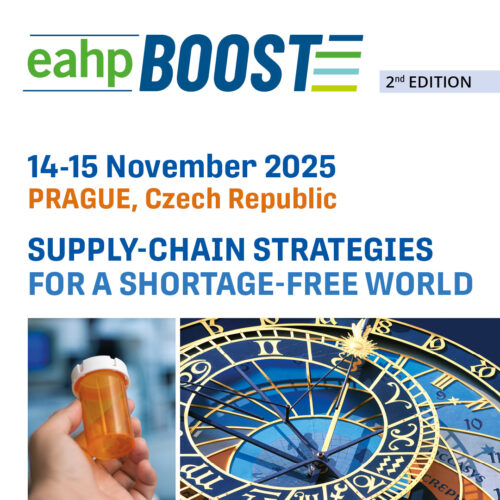Lean management optimisation of the patient care pathway in an onco-haematology outpatient hospital
Pdf

European Statement
Introductory Statements and Governance
Author(s)
Florent MARTY, Sephora BELO-KIBABU, Driss CHAOUI, Jean-Luc PONS, Romy LINOSSIER-ROCHER
Why was it done?
Over the last few years, French healthcare establishments have been moving towards a more ambulatory approach to medical care. The growing number of patients treated in OPH has necessitated a reorganisation of these units. Staff at the onco-haematology OPH and the team at the centralised cytotoxic preparation unit in our hospital have reported organisational problems affecting the care pathway for patients admitted to the unit, leading to excessive delays in treatment and long waiting times for patients. Waiting time is one of the best measures of the quality of care provided.
What was done?
The project is to improve the overall patient flow within the outpatient hospital (OPH) service by reducing so-called non-value-added and compressible waiting times, without affecting the quality of patient care. This should have an impact on the flow of onco-haematology patients and therefore enable the OPH to operate more smoothly. Improvement actions must be simple, quick, easy to implement and inexpensive.
How was it done?
Data collection (waiting times, volume of activity) was carried out using: patient pathway mapping, observation grid, nurse and haematologist questionnaire, Actidiag software. Application of Lean through the development and facilitation of Kaizen workshops. The improvement actions were chosen during a brainstorming session between haematologists, pharmacists and nurses. A new data collection is then carried out and the results compared.
What has been achieved?
The stays of 64 patients were studied before optimization and compared with those of 79 patients after optimization. Improvement actions include : creation of a shared file, installation of a giant screen in the department connected to the new file, anticipation of preparations. Countermeasures reduced overall waiting times by 42%, cutting the patient’s length of stay by 53 minutes. The care time represents 54.6% of the time spent in the OPH, compared with 41.2% previously. This has also enabled the department to take on 18% more patients.
What next?
Healthcare professionals have noted a smoother flow of activity, making the care pathway more fluid and enabling patients to spend less time in the department, without impacting on patient care. This results in better rotation of OPH beds using a simple and easily reproducible method.
IS IT POSSIBLE TO TURN AROUND THE TREND ON INCREASING AMOUNT OF BACKORDERS AT THE NATIONAL LEVEL
Pdf

European Statement
Selection, Procurement and Distribution
Why was it done?
Globally, we are facing an increasing amount of drug shortages, even though international regulatory authorities take initiatives to improve this.
We have national order data available through one national organisation that manages all tenders and backorders for drug supplies to all hospital pharmacies.
Access to order data enabled us to start this improvement initiative in May 2014, and hence fight the backorder challenge at the national level.
What was done?
We applied LEAN and Supplier Collaboration to turn around the trend of increasing amount of drug backorders to hospital pharmacies.
Our initiative consisted of tight follow-up and continuous improvements with ‘TOP6-suppliers’, (ie, the 6 suppliers with currently the most negative impact on our national drug supply).
‘TOP6-suppliers’ are selected each week at LEAN board meetings.
Tight supplier follow-up, by e-mail, weekly:
We informed the ‘TOP6-suppliers’ that they currently are among the suppliers with the most backorders, and asked them to:
• Confirm/update delivery dates for all open backorders
• Inform us of the underlying reason for each backorder
The suppliers continue to receive weekly emails, as long as they are selected as ‘TOP6-supplier’.
Continuous improvement meetings, face-to-face, quarterly:
We had meetings with the 3 suppliers with the highest level of backorders/poorest level of improvements.
Meeting agenda: Reasons behind current backorder situation and actions to improve.
How was it done?
Obstacles—>Our solutions:
Too busy managing actual backorders and no time to drive improvements—>Added one dedicated resource to drive this initiative.
How to manage our effort—>Develop leading key performance indicators (KPIs) that ensure focus on influence and improvements.
We were not always confident that our effort would provide the expected results—>Continue to focus on the agreed approach and KPIs, even if it takes approximately 12 months before we achieve improvements.
What has been achieved?
• Backorder amount decreased by 25%.
• 3rd quarter2014: On average, 99 item-numbers in backorder (range 87-117).
• 3rd quarter 2015: On average, 74 item-numbers in backorder (range 67-99).
• Closer dialogue and improved cooperation with our suppliers with most/critical backorders.
What next?
1. Share achievements.
2. Start an international network to share best practices.
3. Together achieve further improvements in drug supply.
























